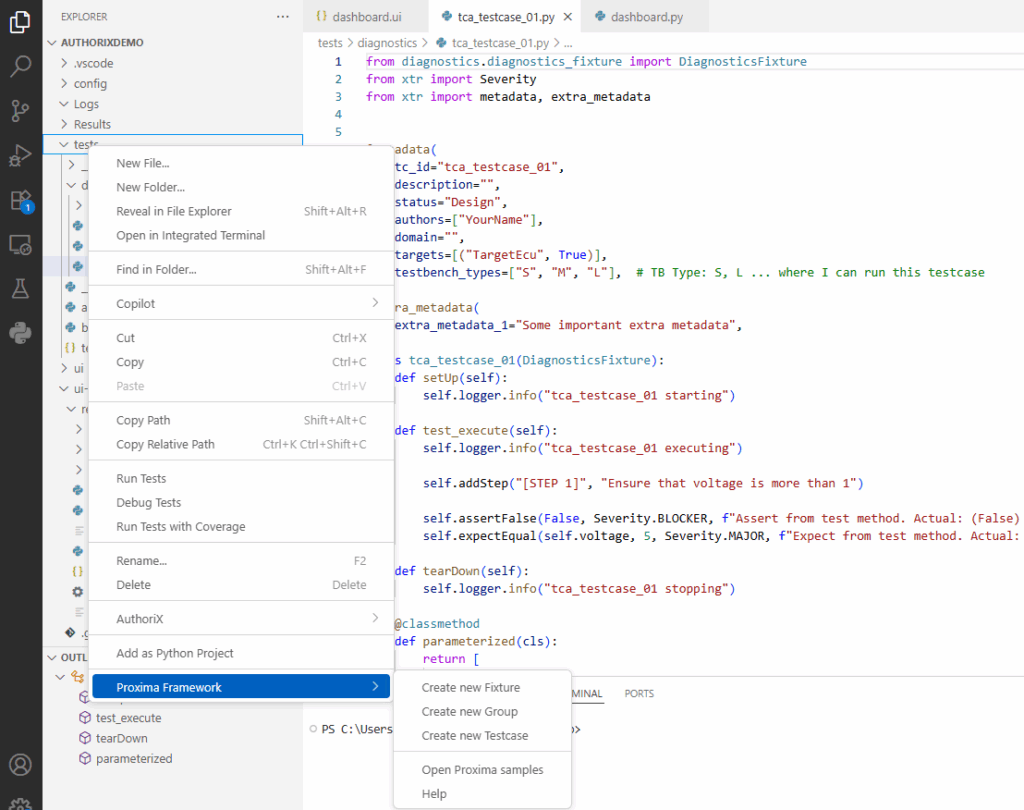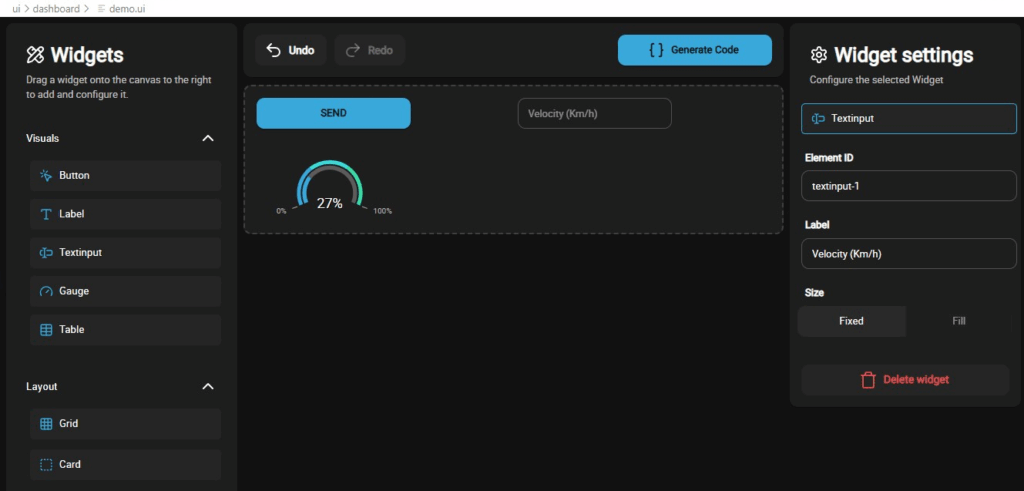Redefining Automotive Validation: Technica’s Unified Test Bench Platform
As automotive systems become increasingly software-driven and interconnected, the complexity of testing and validation has surged. From electronic control units (ECUs) to advanced communication protocols, engineers are tasked with ensuring flawless performance across a vast array of components and scenarios. This validation process spans both virtual/simulated environments and physical test benches, often involving thousands of test cases executed across distributed XiL systems.
This testing landscape poses multiple challenges. Fragmented toolchains, manual configurations, and scalability issues continue to slow down development cycles and inflate costs. The typical challenges that engineers face in executing testing and validation across test benches are the very challenges that Technica’s Platform is purpose-built to solve.
- Fragmented Toolchains: Engineers often juggle multiple tools for test creation, execution, and analysis, leading to inefficiencies and integration issues.
- Manual Configuration Overhead: Setting up test environments manually is time-consuming and error-prone, especially when dealing with complex ECUs communication protocols and Restbus simulation.
- Limited Scalability Across Test Benches: Managing distributed test benches or HIL farms is difficult without centralized scheduling and resource allocation.
- Inconsistent Data Capture and Analysis: Capturing signal-level data and converting it into actionable insights is often inconsistent, especially across different platforms.
- Lack of Real-Time Feedback and Automation: Engineers struggle with delayed feedback loops and limited automation, which slows down validation cycles and increases costs.
These challenges are not just operational – they directly impact time-to-market, software quality, and overall vehicle safety. Technica Engineering has developed a comprehensive Test Bench Management platform that transforms how validation teams operate. By integrating development, execution, and analytics into a single ecosystem, the platform addresses each of the above challenges head-on:
- Integrated Workflow: Combines IDE, API, test management, farm orchestration, and analytics into one seamless experience.
- Automated Configuration: AuthoriX enables instant setup using ARXML files and AI-powered Python based test case generation.
- Scalable Execution: ProximA (MTF-SDK & Diagnostic Stack) offers simplified execution, trace collection and interactive reports.
- Advanced Analytics: NexarioN provides local and cloud-based access to execution results and bench status, enhancing usability and transparency.
- User-Centric Design: StratoS allows centralized scheduling and execution across multiple benches, optimizing efficiency.
Let’s take a closer look at how each component of the platform contributes to this transformation.
At the core of our innovative platform lies AuthoriX, an intuitive Integrated Development Environment (IDE) designed specifically for developers and testers in the automotive domain. With support for a broad range of protocols including CAN, CAN-FD, LIN, FlexRay, Ethernet, SOME/IP, DoIP, UDP, XCP, …; AuthoriX empowers teams to configure, manage, and execute tests across multiple communication layers with unprecedented ease.

Figure 1 : Microsoft Visual Studio Code Plugin for Python based Test Case Creation
From importing ARXML files for instant configuration to connecting directly to the test bench via ProximA, our robust API, users can automatically detect the current bench setup and begin testing immediately. This eliminates repetitive setup tasks, ensures configuration consistency, and accelerates test execution.
AuthoriX also integrates AI-powered assistance, capable of:
- Converting requirements directly into test cases, reducing human error and accelerating coverage.
- Suggesting optimizations to improve code quality and test execution performance.
- Identifying coverage gaps and proposing additional scenarios to strengthen validation.
With its drag-and-drop panel designer, users can construct realistic use case simulations effortlessly — from integrating a Restbus Simulator to modelling a vehicle speedometer or injecting fault conditions. This visual approach makes it possible to build and execute complex test scenarios without writing extensive code, all while retaining full control over the technical parameters.

Figure 2 : AuthoriX – Panel Designer
Setting up – “off-the-shelf” Testbenches with our AuthoriX Configurator:
Our Tooling equipes the test bench operator with a graphical editor to set up the configuration for the System under Test and link the Capture Modules with the corresponding connections. Hence setting up a “off-the-shelf” test bench becomes a matter of minutes. The AuthoriX Configurator can deploy predefined environments for common validation tasks or be customized for specific OEM requirements.


Figure 3 : AuthoriX Configurator to link the System under Test with the Measurement Equipment
Customers now benefit from buying Technica Hardware as true “off-the-shelf” solution and self-service the set-up, orchestration and usage of the test bench. The next few product introductions will show how to execute the test cases, collect the results and operate the test benches in the most efficient way.
ProximA serves as the bridge between the user interface and the physical or virtual test bench, enabling both local and remote execution. It facilitates real-time ECU interaction, precise component simulation, and supports virtual validation tools such as SIL-KIT or VEOS, aligning with modern model-based development workflows. Its compatibility with ASAM XiL 3.0 ensures interoperability with other frameworks and maximizes investment protection.
Once tests are executed, automatically captures, processes, and stores results. Which enhanced with our MTF-SDK, allows Proxima delivering the results to be shown as interactive reports and graphical analyses, and allows engineers to drill down into signal-level data for precise diagnostics. Whether evaluating the latency of SOME/IP messages or validating DoIP network behavior under high-load conditions, so raw data is transformed into actionable insights that can be checked in a web-based interface.
ProximA’s key advantages include:
- Deep Ethernet testing capabilities paired with protocol-specific expertise (SOME/IP, DoIP, XCP).
- Interoperability through ASAM XiL 3.0 support, enabling use alongside other OEM-preferred frameworks.
- Tight integration between functional testing with MTF-API and KPIT’s Diagnostic Stack offers true end-to-end validation capabilities.
- End-to-end workflow coverage – from graphical project setup to remote execution and advanced analytics – all in a single integrated platform.
- Time savings through automation and AI assistance, reducing repetitive manual configuration.
The solution is not just a toolset – it’s a complete ecosystem designed to make complex automotive communication testing faster, more reliable, and accessible to teams of all sizes, whether in the lab or operating remotely. In addition, it is proven across multiple global OEM-programs.
NexarioN and StratoS are our test bench and test farm management tools. The core activity of a testing project is the execution of test cases. Usually, a personal computer is not the solution to execute thousands of tests, since daily activities can impact the performance of the environment and therefore, the executions. This is why typically a test bench is used for this purpose. But manually executing test cases and collecting the results is a tedious task. This is why NexarioN was created, to provide a local user-friendly interface to help testers to execute, see and collect these results. Moreover, test managers can see statistics of the test cases executed over time in case they need to report the status of the project. However, NexarioN is not only limited to the executions itself, but it also provides a clear view of the status of the test bench itself, so XiL teams can see if it is properly configured.
Now what if your project is large enough to operate multiple test benches? Will you have to go one by one using this local website? The answer is no! StratoS is our test farm solution that allows users to see the full overview of the project specific testing environment. Apart from all the functionalities of NexarioN, it will also allow users to trigger executions to a specific test bench or to the first available one. Also, testers or developers can book a test bench if they need to debug a specific issue through the calendar view.

Figure 4 : NexarioN for local test bench & StratoS for test farm management
Execution results are available on all levels:
- NexarioN, as the local solution – in private-only environments
- StratoS – as the orchestration center for the whole test farm, gathering and combining all results of the validation project
Technica’s test bench Platform is more than a tool – it’s a strategic enabler for automotive innovation. By addressing the core challenges of fragmented workflows, manual setup, scalability, and data analysis, it empowers validation teams to work faster, smarter, and with greater confidence.
From AuthoriX’s intelligent test case creation to StratoS’s orchestration of distributed benches, the platform delivers a seamless experience that reduces complexity and accelerates development cycles. Whether you’re validating a single ECU or managing a global test farm, Technica’s solution ensures that your testing is robust, reliable, and ready for the future of mobility.